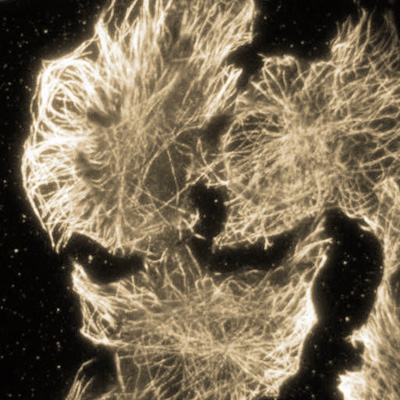— The Cytoskeleton
Cell morphology is determined by the cytoskeleton, a "cellular skeleton" that gives cells their unique shape, much as our skeletons determine the shape of our bodies. The cytoskeleton is a mechanical scaffold, a phrase which brings to mind the mechanical structures that support human construction projects. Like scaffolds built by humans, the cytoskeleton is built from different structural elements: (a) microtubules, which can loosely be thought of a "poles", (b) actin filaments, which can be thought of as wires, and (c) intermediate filaments, which can be thought of a ropes. Using its combination of poles, wires, and ropes, our cells build an internal framework to give themselves shape.
